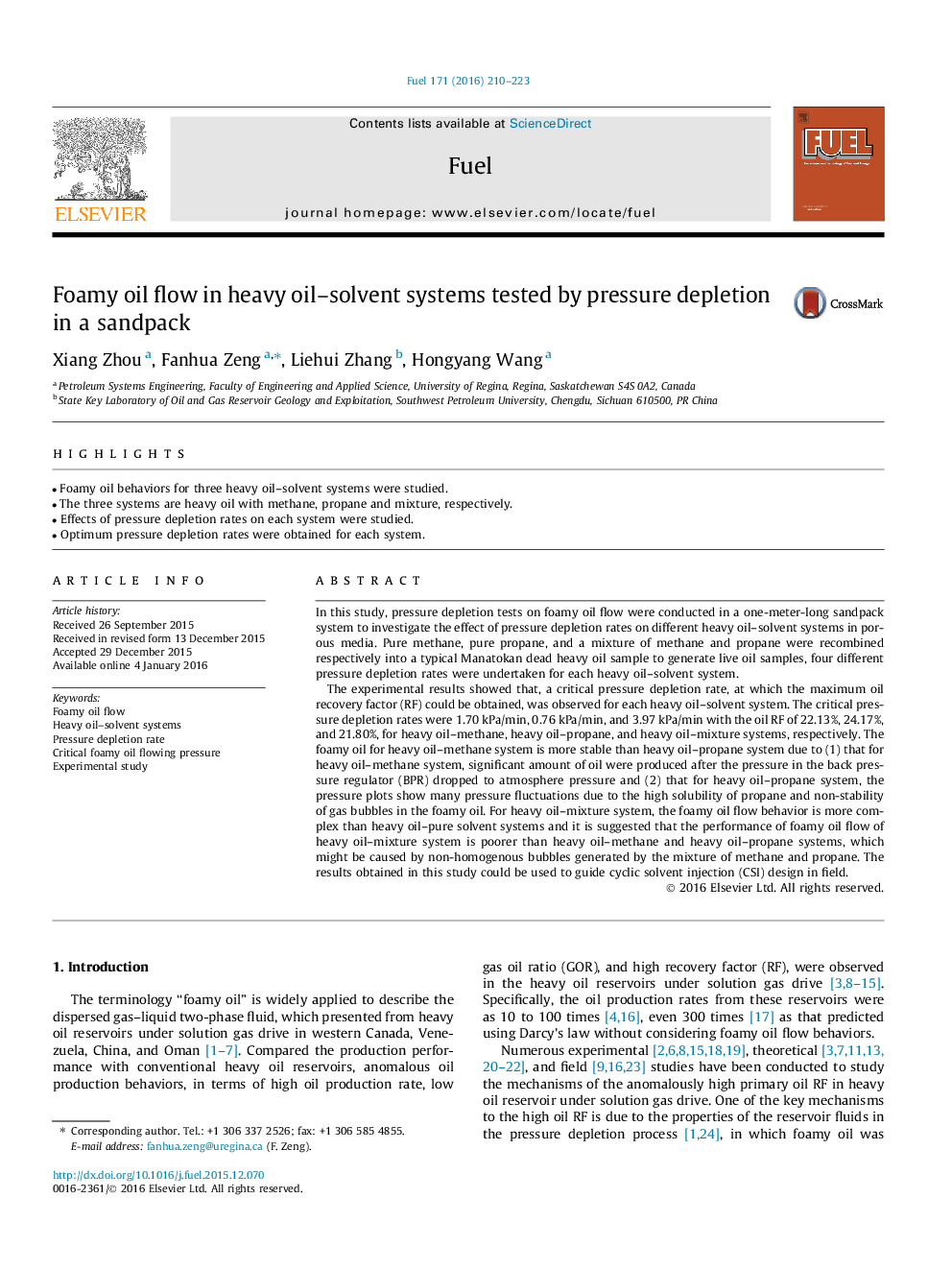| Article ID | Journal | Published Year | Pages | File Type |
|---|---|---|---|---|
| 205274 | Fuel | 2016 | 14 Pages |
•Foamy oil behaviors for three heavy oil–solvent systems were studied.•The three systems are heavy oil with methane, propane and mixture, respectively.•Effects of pressure depletion rates on each system were studied.•Optimum pressure depletion rates were obtained for each system.
In this study, pressure depletion tests on foamy oil flow were conducted in a one-meter-long sandpack system to investigate the effect of pressure depletion rates on different heavy oil–solvent systems in porous media. Pure methane, pure propane, and a mixture of methane and propane were recombined respectively into a typical Manatokan dead heavy oil sample to generate live oil samples, four different pressure depletion rates were undertaken for each heavy oil–solvent system.The experimental results showed that, a critical pressure depletion rate, at which the maximum oil recovery factor (RF) could be obtained, was observed for each heavy oil–solvent system. The critical pressure depletion rates were 1.70 kPa/min, 0.76 kPa/min, and 3.97 kPa/min with the oil RF of 22.13%, 24.17%, and 21.80%, for heavy oil–methane, heavy oil–propane, and heavy oil–mixture systems, respectively. The foamy oil for heavy oil–methane system is more stable than heavy oil–propane system due to (1) that for heavy oil–methane system, significant amount of oil were produced after the pressure in the back pressure regulator (BPR) dropped to atmosphere pressure and (2) that for heavy oil–propane system, the pressure plots show many pressure fluctuations due to the high solubility of propane and non-stability of gas bubbles in the foamy oil. For heavy oil–mixture system, the foamy oil flow behavior is more complex than heavy oil–pure solvent systems and it is suggested that the performance of foamy oil flow of heavy oil–mixture system is poorer than heavy oil–methane and heavy oil–propane systems, which might be caused by non-homogenous bubbles generated by the mixture of methane and propane. The results obtained in this study could be used to guide cyclic solvent injection (CSI) design in field.
